Before there were names for styles like death metal and black metal, and before anyone beyond a handful of people knew of these genres, pioneers created the groundwork for both genres and influences on several others. They had little at their disposal besides primitive recording and photocopied zines, but somehow these founders established the basis of new styles.
The media eventually adopted the term “extreme metal” but originally this music went by the appellation “underground metal” because you could not find it in stores, magazines, on TV or in academia. Eventually the genres within underground metal gained recognition and you could find them in record stores starting in 1997 when the distribution model changed.
But years before that the groundwork was laid by a few dissident artists. Let us look at the albums that set up the groundwork for both styles of underground metal, death metal and black metal:
1. Discharge – Hear Nothing See Nothing Say Nothing
By the time Discharge emerged, punk and metal both had large followings. Discharge birthed itself from within the movement called “hardcore punk” that assembled itself when punk fans felt like their music had been co-opted by the very radio industry it hoped to alienate. Hardcore punk bands lived in squats, recorded with whatever was handy, and promoted themselves with zines and 45 RPM singles (the origin of today’s 7″ records). They made their music deliberately abrasive and their themes beyond anarchistic into pure nihilism and rejection of all social thinking so that radio could not co-opt them. For the most part, they were successful, but then the genre became inundated with imitators who saw the simplicity of the music and the power of the social scene and entered for their own purposes, like marketers and advertisers would do years later. Discharge struck back with the ultimate anti-rock album. Drums did not coordinate with guitars, instead keeping time while streams of power chords flowed over them and changed at will. Vocals repeated short cryptic koans that entirely rejected the idea of society itself. Taking a cue from Motorhead, Discharge also added organic distortion to the vocals, creating a sound like an unearthly howl from a place collapsing into hell. Released in 1982, Hear Nothing See Nothing Say Nothing launched a wave of others who used these techniques, including all of underground metal.
2. Hellhammer – Apocalyptic Raids
In sunny, peaceful and socially engineered to perfection Switzerland, discontent arose with this occult and anti-social release. Turning up the intensity on distorted vocals, drawing influence from both Venom and Motorhead, Hellhammer wrote slower riffs than Discharge but added in the sense of dark finality that bands like Black Sabbath successfully captured a decade before. In addition, Hellhammer contributed a style of songwriting that probably derived from progressive rock records, who themselves borrowed it from classical: song structure followed the content of the song and not a standard song format. This caused the band to spend a great deal of energy matching up riffs so that they “talked” to one another with a type of internal dialogue. Heard best on the epic 9-minute “Triumph of Death,” this technique allowed Hellhammer to fuse the alienation of punk with the dramatic theological imagery of Black Sabbath into a mini-Wagnerian opus. These techniques came to live on in radically different forms in both the rising death metal and black metal genres.
3. Bathory – The Return…
An entirely homebrew project, Bathory took what metal bands were doing to its logical conclusion and starting in 1984 recorded a series of albums using heavy distortion, occult themes, distorted vocals and fast chromatic riffs. While much of this material stuck closer to standard song format, quite a bit deviated with inventive songwriting that suggested a power of theater in the presentation of metal riffs. “The Return Of Darkness and Evil,” the title track from the second Bathory LP, demonstrated this power with its soundtrack-like thematic composition. Although this band derived no influence from Venom, its distorted vocals took a higher path toward a harsh shriek like one might find in a horror movie soundtrack. As a result, not only death metal but all black metal bands derived influence from this founding act.
4. Slayer – Hell Awaits
Starting the year after the release of the Discharge album, Slayer crafted a new kind of heavy metal using the chaotic rhythms and chromatic composition of hardcore punk but the elegant and theatrical structures of heavy metal. The result shifted from social awareness lyrics to mythology that revealed a dark future for humanity, and stitched together songs of multiple contrasting riffs which shifted to support content instead of content supporting song form as most pop bands did. This created albums in which listeners could lose themselves entirely and made Slayer one of the biggest and most respected metal bands in history. The tremolo-picking used to create fast flowing riffs that kept energy high, unlike the muted-picking used by most speed metal bands of the time, formed the basis of the technique used by all death metal and black metal bands since. If a band falls within the underground umbrella, it undoubtedly takes influence from the first four Slayer records and most likely has at least one die-hard Slayer fan among its members.
5. Sodom – Obsessed by Cruelty
Inspired by Venom, Sodom combined the energy of hardcore punk and the new techniques of Slayer and speed metal bands to come up with its own primitive version of this new style. These shorter songs resembled the thrash which was rising as a style at the time but instead picked dark and morbid occult topics. Despite the basic instrumentation, Sodom gave its songs serious themes and pulled off epic melodies which fit an archetypal pattern much like those of horror soundtracks do. The resulting concentrated bursts of fury gave rise to much of the viciousness of underground metal as well as its twilight atmosphere and fiery sense of destruction for all that occupied positions of social acceptance. While many of these songs fit standard song format, Sodom interrupted that to present concluding material in a style like that of Black Sabbath. As time went on, this band verged closer to death metal but kept the searing emptiness which lived on in black metal.
Tags: Bathory, Black Metal, death metal, discharge, hellhammer, slayer, sodom, underground metal

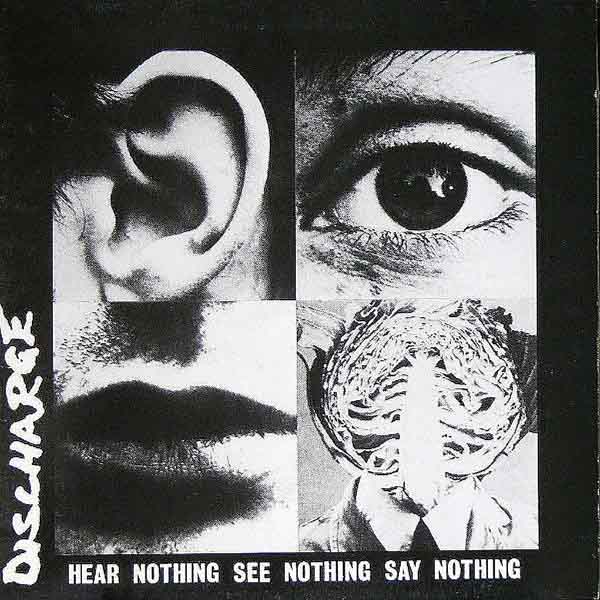
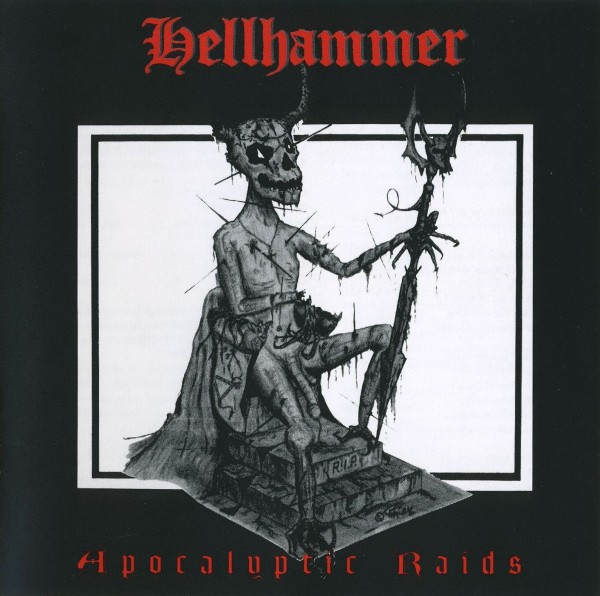
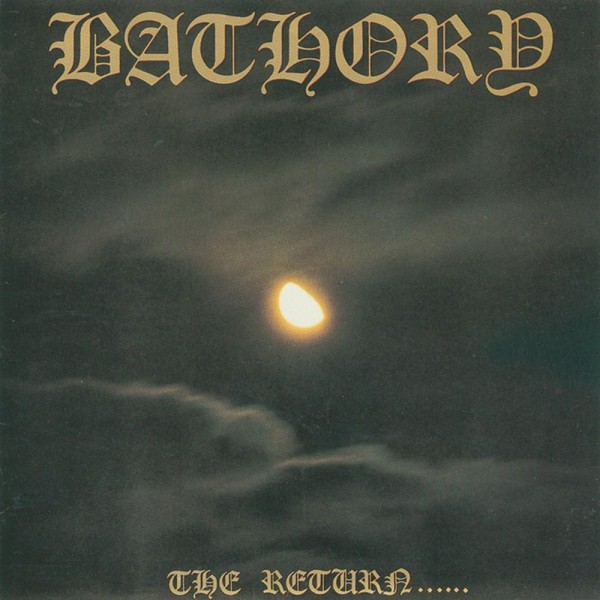
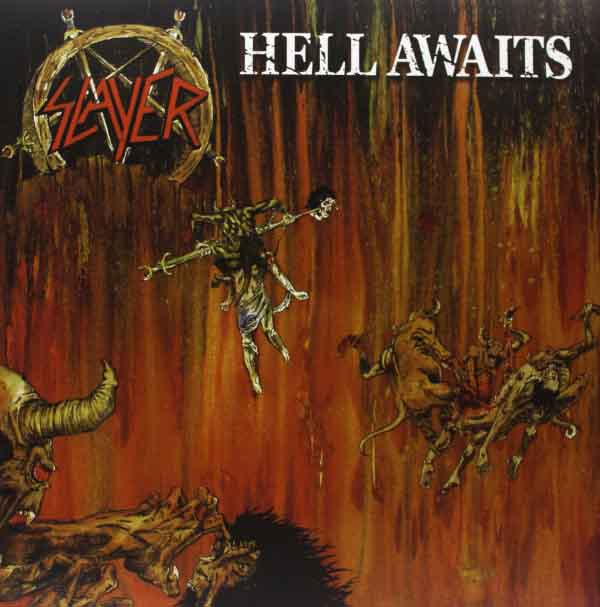
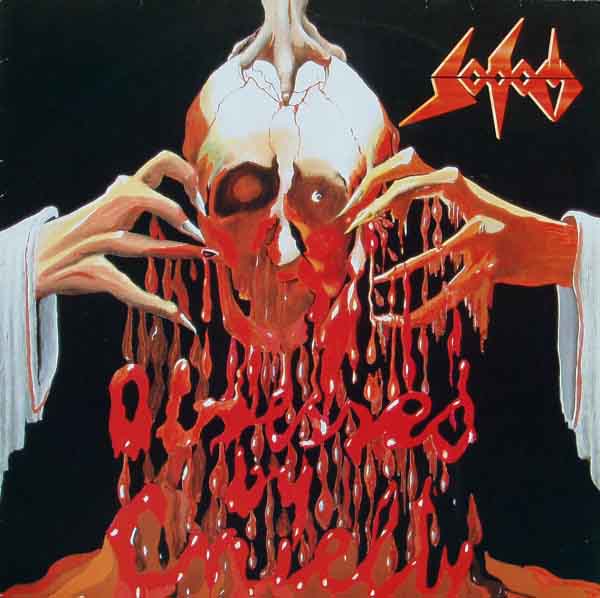


Wonderful, well thought out picks. I simply cant think of better choices (if restricted to 5).
An older article on this website that talked more about metal history also has a couple of albums that might belong if you were to pick ten ( https://www.deathmetal.org/news/a-short-history-of-underground-punk-and-metal-music/ ). With five though, this is near perfect. I think there may be minor disagreement on Discharge but imo that is well placed too. Without that punk infusion there would BE no underground metal after ~1985-88
Besides music though, I think in terms of outlook, evil, badassness etc. Venom was also important. They dont compare to any of the above obviously but somehow I dont think there would be a The Return without Venom.
I disagree. Quorthon was never influenced by Venom. Further, combine Angel Witch and Motorhead and you have a better version of Venom. There are always multiple paths culminating in one so obvious that it gets adopted, but in this case, that path was Slayer-Hellhammer-Bathory-Sodom leading to all death metal and black metal.
I agree that he was not directly influenced, but I think Venom upped the metal overton window when it came to Evil and this had its importance to the underground. Still its a 50/50 thing because Quorthon was absolutely not influenced by Venom, as you said lol.
To clarify, in a way Angel Witch + Motorhead did not. So many bands have cited Venom as an influence of some sort that I believe they belong in such a discussion; however no doubt they were nothing special musically.
They certainly influenced Immortal for instance, Mayhem I dont know about but suspect its the case there too. Only in outlook, the way Reign in Blood influenced some bands only in how extreme it was, not musically (thoug I admit you can hear Slayer in most underground bands somehow R.I.P. hanneman :( )
Where’s Sepultura?
I second this. Sepultura should be number 5, but that is just my opinion. I’d place Sodom as honorable mention.
While I dont disagree that Morbid Visions may belong in an extended list or as an honourable mention, just like with my Venom comment I believe there would be no Morbid Visions w/o Sodom demos (that led to the Sodom album listed in the article). This was an era where everyone wanted to up the ante and if you didnt you werent interesting (pure natural selection). EVIL!
Perhaps there is no relation there (I just dont know), but Sepultura did open for Sodom later on and I suspect they were an… ideological (?) influence for Sepultura. Again, in the vein of my Venom comment above more than a direct influence. Sodom demos were important for proto-black metal kind of like early Mayhem was for fully realized black metal. They definitely precede Sepultura and belong in this list, not least because they were Euro and not South American; hence more visible (as much as that can be said about pre-internet / zine era metal lol).
Despite that if Sodom were replaced by Sepultura in this list you wouldnt hear me complaining. In fact your comments are making me rock Morbid Visions as I type this.
Mayhem!, WAR!!
Too bad about the whole Cavalera/Kisser drama and too bad about Frank Blackfire convincing Sodom to take a more mature (read lame speed metal style political) approach with Persecution Mania. Now that album was fucking important for underground metal!
You are right on the Sodom demos and Sodom’s influence on the Brazilians, as Sodom had formed and released material before Sepultura. But Sepultura’s material in ’84 and ’86 is superior in my opinion. I just feel as though Morbid Visions did more for the genre than Obsessed did.
Could Voivod be on the list too?
Voivod’s cool but I don’t think they could be on this list. They would be on the Top 5 Underrated Metal Bands Ever list!
From a purely metal perspective, Discharge is more the odd one out. But yeah that’s probably splitting hairs and this is more about what layed the groundwork for underground metal (could be any genre).
While I think I know what you mean, could you please clarify? Discharge is the odd one out because they are a hardcore band and that is it, whereas they influenced both metal attitude and instrumentation. Am I about right or did you mean something else?
They are the odd ones out only because they are not a metal band per se correct? Sorry fo asking something to w
Sorry for asking something so apparently obvious* >.>
All these bands fit well under the category of proto-underground.
Not yet death or black metal and clearly not the speed metal of the day. Slayer is interesting because it sits well at the crossroads of different subgenres.
.
Hell Awaits is the coolest of the bunch, followed by The Return. I still can’t truly enjoy Obsessed by Cruelty; I listen to it and understand it so to speak, but on an emotional level it just doesn’t click. Ever felt that way with other albums?
Slayer found the intersection of everything and still made it their own.
Most of Sodom’s discography and Possessed’s Seven Churches do not click with me. Emotionally I feel they are dry. I understand the instrumentation and the musicality. I can even appreciate it, but other than that I never listen to Sodom or Possessed.
I would say try the Possessed album a couple more times and as for Sodom; restrict yourself to the tracks Nuclear Winter, Iron Fist (best Motorhead cover imo), Persecution Mania, Christ Passion and Outbreak of Evil (if you have the version of Persecution Mania with that bonus track).
Seven Churches can be a bit dry I suppose emotionally due to their tremolo approach, which may lead to missing that death metal feel of emerging from a rapid fire riff to a related change; a revelatory experience. I must admit though that I rock Persecution Mania much more often than Seven Churches, bouncy riffs and all.
Agent Orange also has worthwhile moments but it is basically the last gasp of the band (blame Blackfire again). By Code Red they have reached their nadir and that album is only worth listening to if you want to rhythmically bash your head against a wall (TOMBSTOOOOOONE, bounce, bounce, brain damage)
b
I realize you are probably an experienced listener but I had similar problems with both bands so mayyyyybe this will help \m/
I’m pretty familiar with Possessed and Sodom’s stuff. I tried them out many years ago and have played then quite a lot over the years. Their music merits are good, but when I feel the mood for proto underground metal I choose other albums. I never am in the mood for them anymore.
Great comments. I am impressed by Van der Pol’s descriptions of each album and justifications for their inclusion. Not easy to do with so few words.
Sepultura on Morbid Visions might be worth a consideration, though everything here except Sodom influenced their original direction.
Great article. The next one should be The 5 Albums that Changed Underground Metal Forever.
You know, the legendary stuff like Hvis Lyset Tar Oss, Final Holocaust, Reign in Blood etc….
Ahhh…. I hate that pic of the young Quorthon with those sexy pouting lips. Give me that broken old hats backward cynic with the thousand yard stare any day.
Just put a Lemmy pic next to it.
I don’t think Sodom are on the same level as those other bands. Would replace it with Sepultura.
Meryful fates ep and the first album HAD influenced
Slayer a lot ,
Except for Bathory and Discharge
Like it or not Hellhammer, Slayer and Sodom
Had VENOM and METALLICA in their mind as a catalyst/competitor for their music and this can be considered a motivation for their music
From Sodom
How did you get started in music?
We started the band in 1982. The only one who played an instrument was Chris Witchhunter. Aggressor said he wanted to play guitar, so I had to play the bass. I had never played bass. I went to the store, bought a cheap bass guitar and we started jamming. About a year later we did the first demo Witching Metal. We were so inspired by Venom, the old Motorhead stuff. We wanted to get heavier than Venom, faster than Metallica. That was our aim. We never gave up.
From hellhammer
http://www.voicesfromthedarkside.de/Interviews/HELLHAMMER–6910.html
Slayer
Read the interview
http://www.blabbermouth.net/news/slayer-unpublished-1983-interview-with-kerry-king-and-jeff-hanneman-now-available/
An excellent article. It seems churlish to ‘argue’ with it (I prefer to say ‘discuss’ rather than ‘argue’), but as Benny states above, Mercyful Fate may well deserve a place on this list. Music-wise as well as with sheer intent – they possessed the essential theatricality of ‘evil’ metal that Venom hinted at, but which musically speaking they didn’t really pull off.
Great work.
What about Death or Nasty Savage? The beginning of the huge Tampa Death Metal scene which began in the 80’s as an undergound movement.